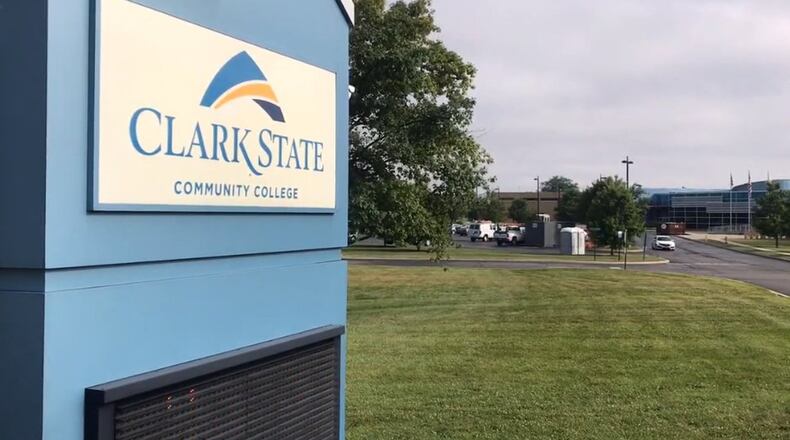Clark State’s most significant minority increase was with the Hispanic population, which jumped from 1% to 3%, according to data from the school. However, Black student population dipped from 16% to 13%. This year’s American Indian student enrollment went from 0.1% to 0.2% and Asian student enrollment went from 1% to 1.5% compared to 2019, the school said.
Wittenberg University’s minority student population remained relatively flat, compared to last fall, according to data from the school, which has a total of 1,488 students this fall compared to last year’s 1,619 students.
Black students ― the institution’s largest minority group ― declined from 9.3% in 2019 to 9.2% this year. In addition, the number of American/Alaska Native, Asian, Hawaiian/Pacific Islander and multi-racial students declined by .2%, compared to last fall, school officials said. However, there was a slight increase among the number of Hispanic students, which climbed to 4.5% this year compared to 3.9% in 2019.
In comparison to institutions nationwide, Native Americans’ undergraduate enrollment declined by 9.6%, followed by Blacks by 7.5% and Hispanics by 5.4%. White enrollment dropped to 6.6%, according to a National Student Clearinghouse Research Center’s latest study, released on Nov. 11. The group’s latest college enrollment data is as of Oct. 22 and is based on 13.6 million enrolled students from 76% of postsecondary institutions that reports to the Clearinghouse.
Overall college enrollment dipped to 4.4% across the country this fall, the Clearinghouse said, noting that the COVID-19 pandemic is to blame for the decline.
Enrollment declines among people of color are higher because they are more likely to attend community colleges, said Doug Shapiro, the Clearinghouse’ executive director.
Nationwide, community colleges saw the sharpest drop in overall enrollment of 9.4% compared to their pre-pandemic loss rate of 1% between fall 2018 and 2019, according to the Clearinghouse. That’s because the nation’s institutions have had to switch to virtual learning as a result of the pandemic, and many community college programs are not as easy to convert online as it is for four-year schools, he said.
In addition, there are normally a few cultural barriers to overcome, given the fact that minority students are already at a disadvantage in technology and other areas, said Bruce Johnson, president and CEO of the Inter-University Council of Ohio. Although colleges across the state do a good job of reaching out to minority and ethnic groups, the COVID-19 pandemic made recruiting difficult this year, he said.
College recruiters weren’t able to travel, so they turned to virtual recruiting. However, some students from underrepresented communities may not have access to computers to see the recruiting pitches, fill out college applications or take classes remotely, Johnson said. Others don’t have anyone at home to encourage or help them apply to colleges, he said.
“To the extent that education is a great equalizer for all people, it’s even more of an equalizer for minority populations,” Johnson said. “So, they have the most to gain, and therefore, the most to lose by not entering college.”
Within other local schools, Cedarville University added 170 new students, bringing its total enrollment this year to 4,550, a 3.8% increase over last year, according to the university. However, the number of minority undergraduate students went from 10% last year to 9.9% this fall, the school said. While the number of Black students increased, there were 22 fewer Hispanic undergraduates this fall, the university said.
Antioch College saw the biggest percentage increase in undergraduate enrollment among the area’s private institutions. The school added 50 new students this year, bringing its total to 116 ― a 22% increase, school officials said. The number of new students include eight Blacks and seven more Hispanics.
There were declines in the number of Native American and students with two or more races, and the number of Asian students remained the same, the school said.
Central State and Wilberforce, the area’s only Historically Black Colleges and Universities, experienced overall enrollment declines as well. CSU, whose students are 90% of the school’s total population, saw a nearly 9% dip in enrollment for traditional undergraduate students, school officials said.
Wilberforce, which has only online instructions this fall because of the pandemic, has 131 fewer students, compared to last year, officials said.
Wright State’s overall fall enrollment of 12,234 exceeded officials’ expectations, as they thought the coronavirus would have more of an impact. This year’s overall minority student population ― 21.6% ― remained nearly flat, compared to Fall 2019 ― 21.2%. Black students, the school’s largest minority group, dipped slightly to 9.7% from 10% last year, according to school data.

